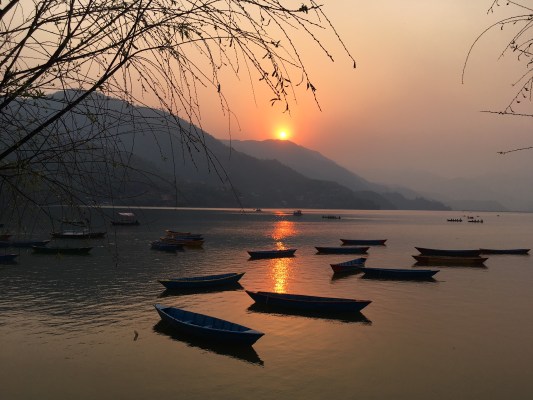
1
Oct
Nepal Fast Facts
4 mins readNepal is a country which comprises of phenomenal scenery, charming locals, mesmerising flavours and an encaptivating history. Here are some fascinating facts for you to learn and impress your friends, co-workers, family or travel companions with.
- There are over 80 ethnic caste groups in Nepal. From this, there are over 123 local languages spoken! Amongst the guardians of the Himalayas, there are many different rituals, foods and festivals which contribute to the diversity of Nepal. Did you know that the Tamang ethnic group are considered to be descendants of the horsemen of Genghis Khan? Likewise, the Tharu ethnic group from the South of Nepal came from the Thar Desert in India. It is thought that they fled from there when the Moghuls invaded. Because of their roots, the Tharu are the only people in the world who are immune to Malaria!
- It is home to the deepest gorge in the world the Kali Gandaki Gorge located in the Kali Gandaki Valley. It is surrounded by two 8000+ metre peaks and a valley floor of around 2000 metres. This makes it a whopping 6km deep! This adventure-filled region is a thrilling area for mountain biking or trekking. Here at Ethical Travel Portal, we offer some incredible trips to do exactly that, in the deepest gorge in the world (link here when trips are up).
- Nepal is also a country which offers a third gender option on passports known as “O” category and residence certificates.
- Endangered animals such as the snow leopard and red panda reside in this country. According to WWF they are based in the districts of Mustang, Mugu, Dolpa and Humla. It’s estimated that there are around 300-500 animals.
- Residents of the Mustang district perform sky burials which derive from Tibetan astrology. The neck is tied to a rope and the body is hung on a platform at a height of around 2000-3000 metres for vultures to devour. However, depending on the date and time of the birth the burial depends on one of four rituals. Which according to visithimalayastrek they involve cutting flesh leaving vultures to feed on, burying a body in a chamber, incinerating the body and finally cutting the flesh of the dead body and leaving it to float down a river.
- Nepal has a different calendar to the Gregorian calendar. Festivals, weddings and births are predicted using this. It’s called Nepal Sambat based on the lunar and solar calendar. The current year in Nepal is 2076.
- A renowned festival Gai Jatra is celebrated between August-September in Kathmandu. It is a festival to honour and respect the death of loved ones. Traditionally a former Malla queen had mourned over her dead son for a long time. The Malla king attempted to comfort his wife by asking everyone to come out for the day to show the queen she was not alone in with the suffering. Today to coincide with the motive of Gai Jatra, the pride parade is held on the same day in Kathmandu.
- Even though Nepal is a landlocked country, sea life exists. Dolphins have been spotted living in the rivers of Narayani and Karnali.
- Polyandry is a form of polygamy, where a woman can have more than one husband at the same time. It is illegal in Nepal, however still practised in some mountain communities. Which has been used as a mechanism in society to control the breakup of family property due to inheritance. Likewise, a way to protect women.
- Nepal does not have an independence day as it’s never been colonised. When the British tried to invade Nepal, the hillmen fought with beehives, stones, and the infamous Khukuri knife. Due to the Nepalese strong, persistent resilience, it caused the British to abandon their plans to colonise. As a result, a treaty was devised which has allowed Nepalese to serve in the British army as Ghurkas. To date, they serve and provide a great asset to the U.K.’s special forces.
- Over 23% of Nepal’s total land is reported as a protected area. This includes 12 national parks, six conservation areas, a wildlife and hunting reserve as per the diplomat.
- Some scrupulously detailed intricate doors located in the palaces, as well as heritage sites of Patan, Bhaktapur and Kathmandu, are particularly archaic. To look at it from a different point of view, when some of those doors were crafted, there was no America as it had not been discovered during that period.
- Two fruits are unique to Nepal. They are the native fruit of Lapsi (Choerosopndais axillaris) and Bel (Aegle marmelos). Lapsi is a yellowish-green fruit is known as a form of Nepali plum. It is used in achaar (pickle), spices, tarts and many more. Likewise, Bel is a fruit which grows in the Terai region. Bel is a form of apple and used in ayurvedic medicines alongside dishes. Both fruits are incredibly tasty and a must-try in Nepal.
- During the repression of Buddhism in Tibet, devout Tibetans took off into small impenetrable valleys in Nepal to maintain sacred scriptures that led to enlightenment. Those areas are called Beyul – a forerunner that led to the concept of the fictional Utopian “Shangri-La.”. The book Lost Horizon popularised this notion. When one trek in Nepal, these Beyuls is what you go to! If you’re wanting to discover them, the whole Northern side of Nepal is littered with those valleys.
- At the time of the April 2015 earthquake, Kathmandu rose by a metre and moved three metres to the South. This occurred due to the Indian tectonic plate sliding into the Tibetan plate underground. Which is also the reason why Nepal has the tallest mountains on earth and why they are still rising by 2 mm per year!
Sorry, the comment form is closed at this time.




